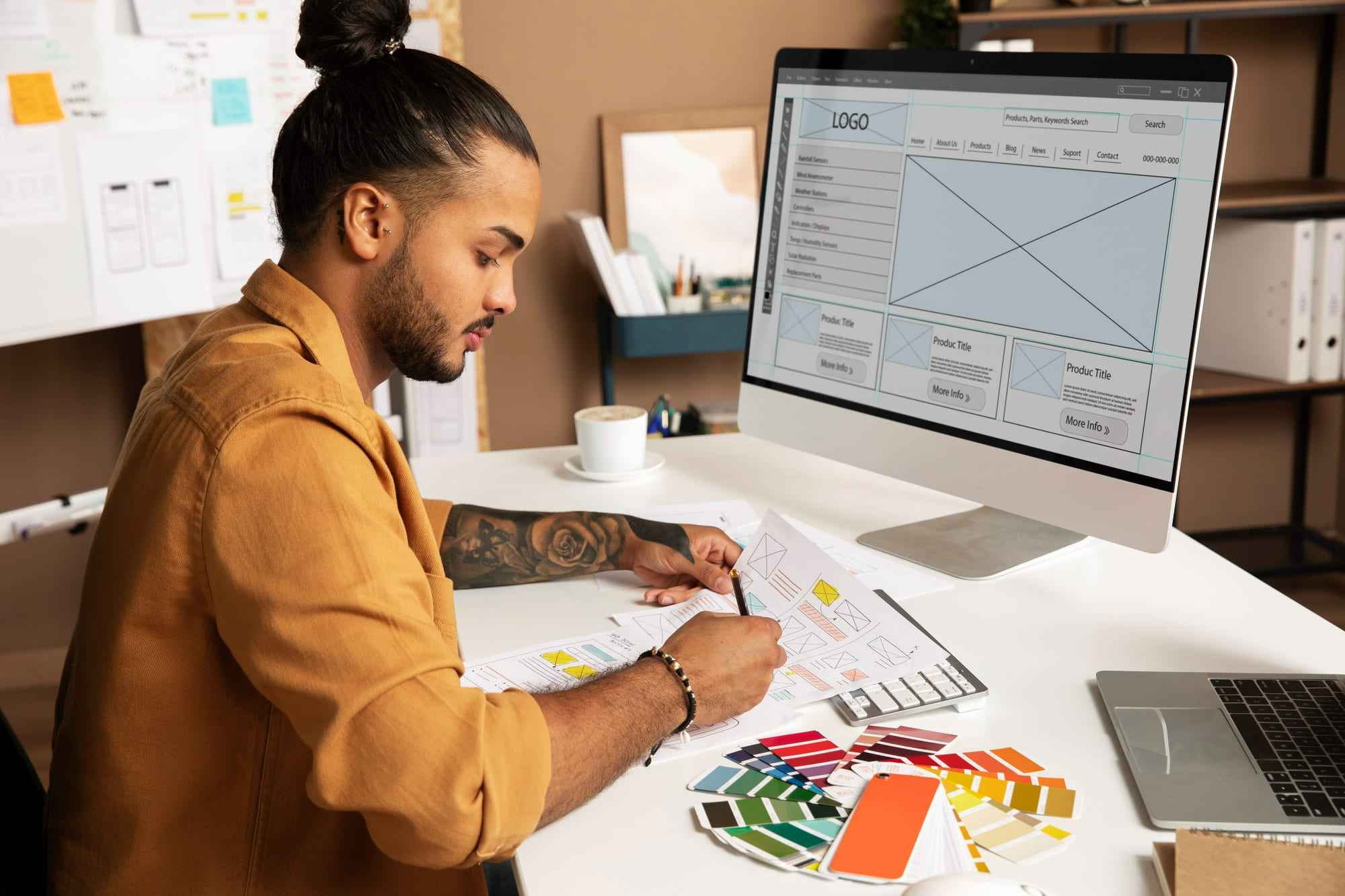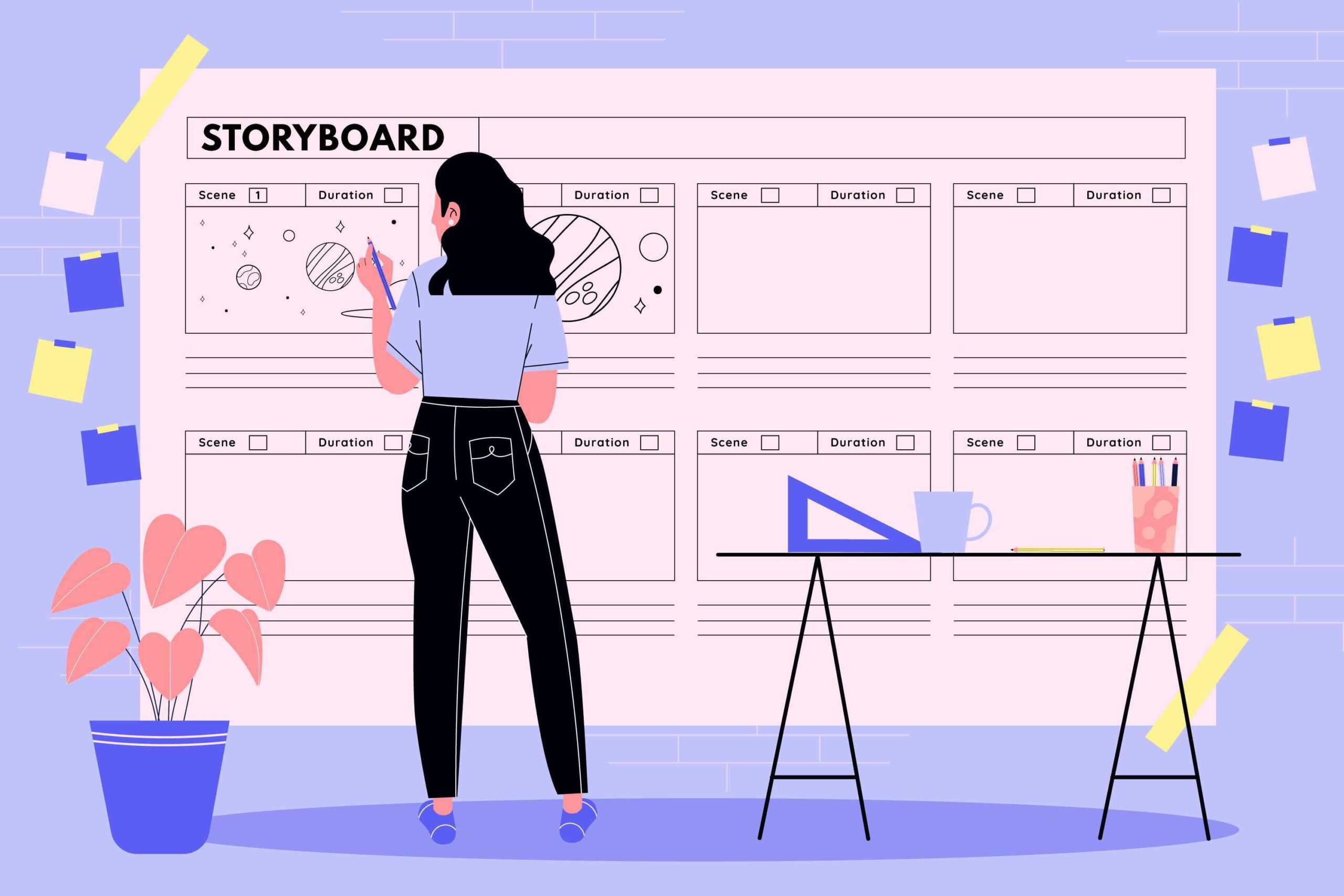In the world of user interface (UI) and user experience (UX) design, creating a seamless and engaging experience for users is paramount. Designers strive to deliver intuitive interfaces that not only look visually appealing but also function effectively. One tool that plays a crucial role in achieving these goals is storyboarding. Storyboarding is a visual representation of a user’s journey through a product or service, helping designers map out and refine the user experience. In this article, we will delve into the significance of storyboards in UI/UX design and how they contribute to creating exceptional digital experiences.
At its core, a storyboard is a sequence of illustrations or images arranged in chronological order. It outlines the flow and interaction points of a product or service, allowing designers to visualize the user’s experience. Storyboards serve as a communication tool, enabling designers to present their ideas to stakeholders and team members clearly and concisely. By illustrating the user’s journey, storyboards facilitate collaboration, align expectations, and ensure a shared understanding of the design direction.
One of the primary benefits of storyboarding is its ability to identify potential usability issues early in the design process. By visually mapping out the user’s interactions, designers can anticipate pain points, discover areas for improvement, and make informed design decisions. Storyboards provide a tangible way to explore different scenarios and user paths, enabling designers to identify and address any hurdles or bottlenecks that users may encounter. This iterative process of refining the user experience results in a more intuitive and user-friendly product.
Storyboarding also helps designers consider the context in which users will interact with their designs. By depicting various user scenarios, designers can incorporate real-world elements and challenges into their designs. For example, if designing a mobile banking app, a storyboard can show how a user might navigate through the app while multitasking or in a busy environment. By considering these factors during the storyboarding phase, designers can create interfaces that are adaptable, accessible, and tailored to the specific needs and behaviors of their target audience.
Furthermore, storyboards aid in creating a cohesive and consistent visual language for a product or service. They allow designers to establish a visual narrative that aligns with the brand’s identity and conveys the intended message effectively. Storyboarding helps designers make informed decisions about layout, color schemes, typography, and other visual elements. It ensures that the UI design remains consistent across different screens and interactions, resulting in a seamless and visually harmonious experience for users.
Another significant advantage of storyboarding is its ability to facilitate user testing and feedback. Storyboards can be used to create low-fidelity prototypes that simulate the user experience. These prototypes can be presented to users or stakeholders to gather valuable insights and feedback early in the design process. By visualizing the design concepts through storyboards, designers can engage users in meaningful conversations and uncover usability issues or areas that require improvement. This user-centered approach ensures that the final product meets the needs and expectations of its intended users.
In addition to its practical applications, storyboarding also encourages creativity and innovation in the design process. Designers have the freedom to explore different narrative structures, visual styles, and user interactions through storyboards. By visualizing the user journey, designers can think beyond individual screens and focus on the holistic experience. Storyboarding promotes a holistic approach to UI/UX design, where designers can experiment with new ideas, push boundaries, and create memorable experiences for users.
Storyboards allow designers to iterate and refine their designs based on user feedback. By creating low-fidelity prototypes through storyboarding, designers can gather insights from users early on in the process. This feedback helps identify areas that may need improvement or adjustment to enhance the overall user experience. By involving users in the design process, designers can ensure that the final product meets their needs and expectations.
Moreover, storyboarding encourages designers to consider the context in which their designs will be used. It allows them to envision the user’s environment, behavior, and goals, which in turn helps create interfaces that are intuitive and tailored to the specific user’s needs. By understanding the user’s journey through storyboards, designers can optimize the interface to accommodate different scenarios and ensure seamless interactions across different devices or platforms.
Storyboarding also fosters collaboration and alignment among stakeholders and team members. By visualizing the user experience, designers can effectively communicate their ideas and intentions to others involved in the project. Storyboards provide a shared vision and understanding of the design direction, allowing for productive discussions and decision-making. This collaborative approach helps prevent misunderstandings, reduces design iterations, and ultimately speeds up the design process.
In addition, storyboarding serves as a documentation tool, capturing the evolution of the design process. It allows designers to record design decisions, iterations, and the rationale behind them. This documentation becomes a valuable resource for future reference, ensuring consistency in design decisions and facilitating knowledge sharing within the design team. Storyboards serve as a visual archive of the design process, enabling designers to revisit and analyze previous iterations and learn from them.
While storyboarding is primarily associated with the early stages of the design process, its usefulness extends beyond that. Storyboards can also be used for user testing and validation of design concepts. By presenting storyboards to users, designers can observe their reactions, gather feedback, and validate their assumptions. This user-centered approach helps designers refine and optimize their designs based on real user insights, leading to a more effective and satisfying user experience.
In conclusion, storyboarding plays a pivotal role in UI/UX design by visualizing the user journey, fostering collaboration, and refining the user experience. By mapping out the user’s interactions and anticipating potential issues, designers can create interfaces that are intuitive, engaging, and tailored to the needs of their users. Storyboarding encourages creativity, enables early user involvement, and serves as a valuable documentation tool. Incorporating storyboarding into the UI/UX design process empowers designers to create exceptional digital experiences that resonate with users and drive the success of their products or services.
For more blogs related to communication design: https://www.dotsod.in/category/communication-design/
Follow us on Instagram https://www.instagram.com/dotschoolofdesign/



